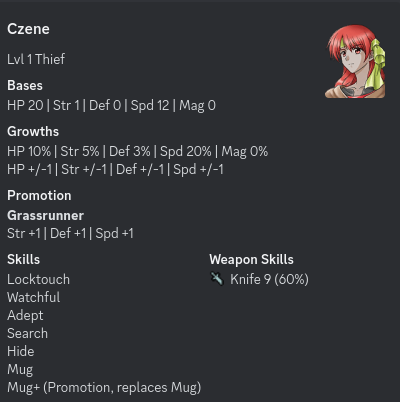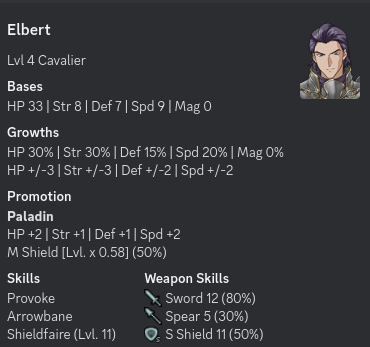Playing around in Builder to no result for the upteenth time, I started with an the intention to make the underdog nature of the plot mechanical with low growths and bases on a squad of mostly trainees and low level units vs monsters, bandits, and evil wizards, but I got sidetracked with the balance and that got me thinking:
-Barring certain archtypal traits (Jagens/Oifey’s having solid bases, Ogma’s being bases over growths that balance parties, Ests that like green numbers with investment, etc) what is a fair range between blue army stats and red army stats
example: early game chapter, a defensive unit joins blue army, but requires rescuing from red army. They have, lets say, average or above average hit points for their class or level, as well as a class or personal base in defense’resistance that makes them a good chokepoint unit, but they are surrounded by enemies that can double and chip for 2 or more damage, and likewise, at base, most of your army will be doubled by the enemies harrassing new blue guy. What would keep this scenario balanced, and what would push too far one way or the other in “fairness”? (for the sake of arguement, lets say there are two steel weapons available in the convoy of mutable type, up to 6 units in your army, and a jaigen or jaigen-esque character to accompany 5 low level units, and three of those units have had two chapters with enough experience to pick up 2 to 3 levels each on average)
-with that kind of design in mind, in broadstrokes, when are growths too low to be fair in scenarios where blue army is outmatched? Currently, I’m leaning on an average of 300 in growths for a majority of units from the lord to late joiners, with 325 to 350 for gimmick units like dancers and un-promotable classes. Playing around with it, even with an army of trainees, the statlines keep pace across the first 4 or so chapters I’ve built, but I’m wondering if promotion gains would need to be deflated to keep the theme, or if something like early FE, 200 to 250 total growths would emulate the feel?
I was just curious what the feedback was from the community on questions like this, or how they felt about general stat deflation and lower growths on average in their fan games

